每天推薦一個 GitHub 優質開源項目和一篇精選英文科技或編程文章原文,歡迎關注開源日報。交流QQ群:202790710;微博:https://weibo.com/openingsource;電報群 https://t.me/OpeningSourceOrg

今日推薦開源項目:《如何正確學習 Node.js How-to-learn-node-correctly》傳送門:GitHub鏈接
推薦理由:RT,這整個項目都是圍繞如何正確學習 Node.js 寫的,Node.js 的簡介和學習方法自然不用說,後面還包括了做 Node.js 開發用得上的一些技能,如果對 Node.js 感興趣但是不知道從何入手的話,這篇文章肯定會適合你。
Node.js 是什麼(節選自該項目):
Node.js 誕生於 2009 年,由 Joyent 的員工 Ryan Dahl 開發而成,之後 Joyent 公司一直扮演著 Node.js 孵化者的角色。由於諸多原因,Ryan 在2012年離開社區,隨後在2015年由於 Node 貢獻者對 es6 新特性集成問題的分歧,導致分裂出 iojs,並由 iojs 發布1.0、2.0和3.0版本。由於 iojs 的分裂最終促成了2015年 Node 基金會的成立,並順利發布了4.0版本。Node.js 基金會的創始成員包括 Google、Joyent、IBM、Paypal、微軟、Fidelity 和 Linux 基金會,創始成員將共同掌管過去由 Joyent 一家企業掌控的 Node.js 開源項目。此後,Node.js 基金會發展非常好,穩定地發布5、6、7、8等版本,截止發稿最新版本已經是8.6,長期支持版本是6.11。
Node.js 不是一門語言也不是框架,它只是基於 Google V8 引擎的 JavaScript 運行時環境,同時結合 Libuv 擴展了 JavaScript 功能,使之支持 io、fs 等只有語言才有的特性,使得 JavaScript 能夠同時具有 DOM 操作(瀏覽器)和 I/O、文件讀寫、操作資料庫(伺服器端)等能力,是目前最簡單的全棧式語言。
今日推薦英文原文:《11 React UI Component Playgrounds for 2018》作者:Jonathan Saring
原文鏈接:https://blog.bitsrc.io/11-react-ui-component-playgrounds-for-2018-eef5a87a1bf8
推薦理由:
11 React UI Component Playgrounds for 2018
Useful online playgrounds and editors for your UI components
As the age of components is upon us, the building blocks of our application』s UI become a bigger part of our development process.
When building with UI components, development speed and the ability to organize and share components becomes critical in the process.
Many tools were formed in order to aid in this workflow, from docs builders to live online playgrounds and catalogs to faster sharing.
To help you find the right tool, here is a short (unranked) rundown of some useful playgrounds to help you visualize, test, share and develop React components. Feel free to comment and add your own suggestions!
1. Bit
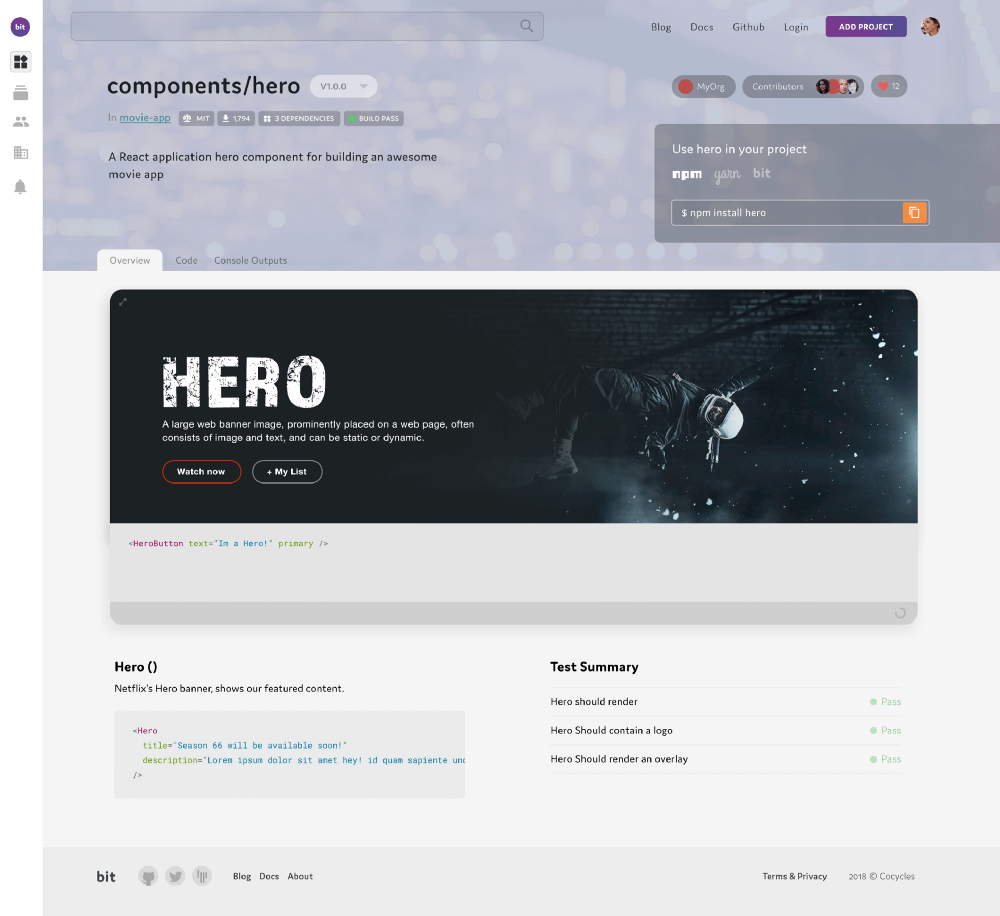
Bit』s component playground isn』t the most feature-rich playground on the list.
However, Bit (GitHub) is the only tool that brings together a component playground with a full component discoverability, development and consumption workflow.
Bit lets you isolate components (including dependancies) and share them from any project into a visual collection, from which your team can find, use and develop them anywhere.
Every component is presented with a live playground, as well as test and build results which Bit runs for every component in isolation. If the component has JSDocs or .md files, Bit will auto-present the component』s docs as well.
Once you choose a component you wish to use, you can install it (and only it) using NPM/Yarn -or- use Bit to import and develop it right from any project.
Through Bit your team can organize and share components, forming a unified hub for your component design system and development in one place. Any team member can share components, update changes and stay in sync.
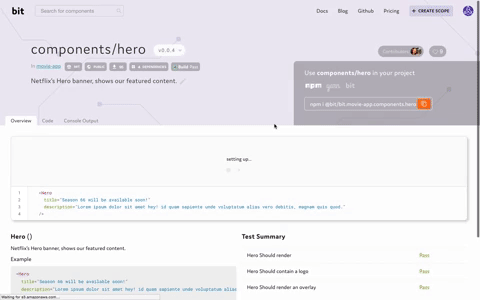
Bit isn』t limited to React or even UI components, and can be used with any reusable JS and TS code (UI components, Plain JS, Node.js, GraphQL etc).
Here』s a short video introduction.
2. Codesandbox
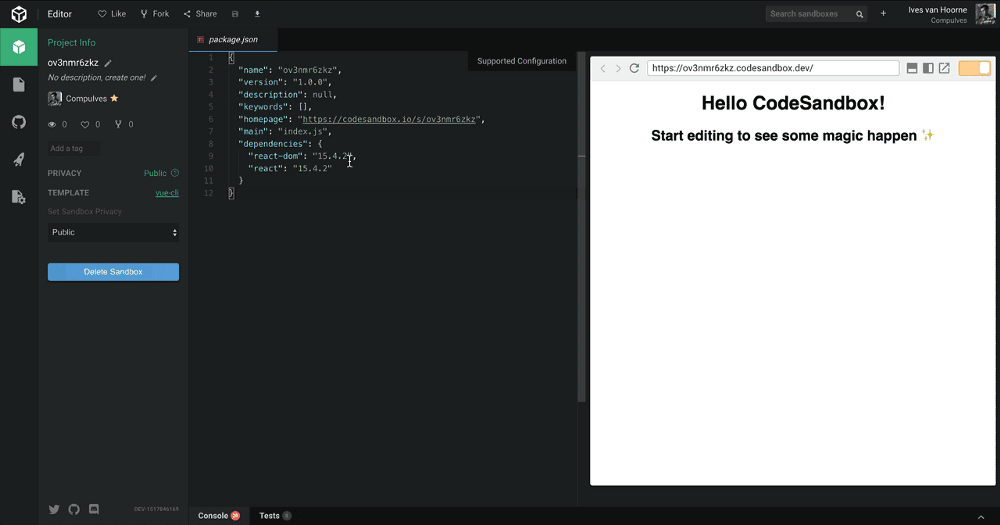
Codesandbox is a great way to play with components online. Its awesome makers describe it as 「an online code editor. It automates things like transpiling, bundling and dependency management for you so you can easily create a new project in a single click. After creating something interesting you can show it to others by just sharing the url. CodeSandbox features a live preview to show the result of the code while you』re typing」.
With the release of v2.5, new UI improvements such as a new sidebar, 「view-mode」, floating previews and more were introduced. It also provides configuration support, a neat integration to GitHub and an Angular template.
The Codesandbox client is also released to GitHub.
3. StoryBook and Styleguidist
Storybook and Styleguidist are environments for rapid UI development in React. Both are great tools for speeding development of your Reacts apps.
With Storybook you write stories in JavaScript files. With Styleguidist you write examples in Markdown files. While Storybook shows one variation of a component at a time, Styleguidist can show multiple component variations. Storybook is great for showing a component』s states, and Styleguidist is useful for documentation and demos of different components.
StoryBook
It allows you to browse a component library, view the different states of each component, and interactively develop and test components.
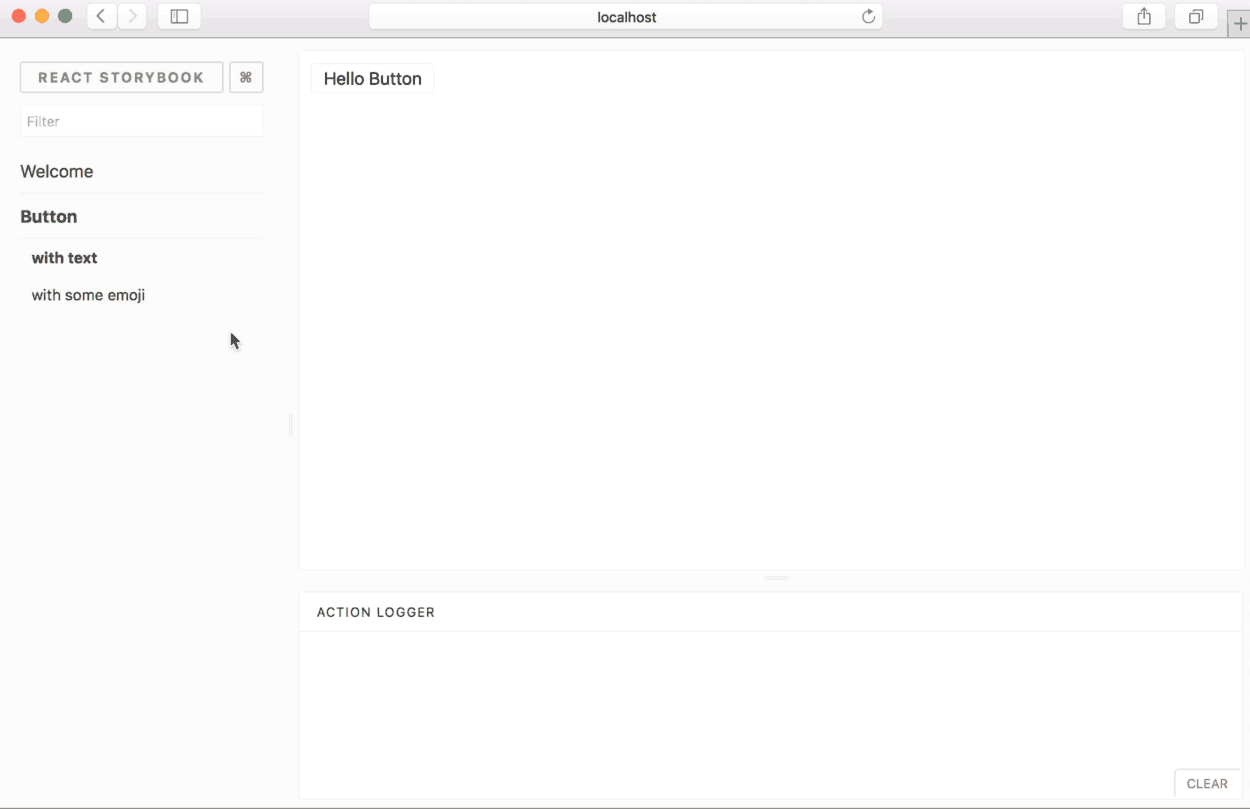
StoryBook helps you develop components in isolation from your app, which also encourages better reusability and testability for your components.
You can browse components from your library, play with their properties and get an instant impression with hot-reload on the web. You can find some popular examples here. Plugins can help make your development process faster, so you can shorten the cycle between code tweaking to visual output.
Styleguidist
React Styleguidist is a component development environment with hot reloaded dev server and a living style guide that lists component propTypes and shows editable usage examples based on .md files.
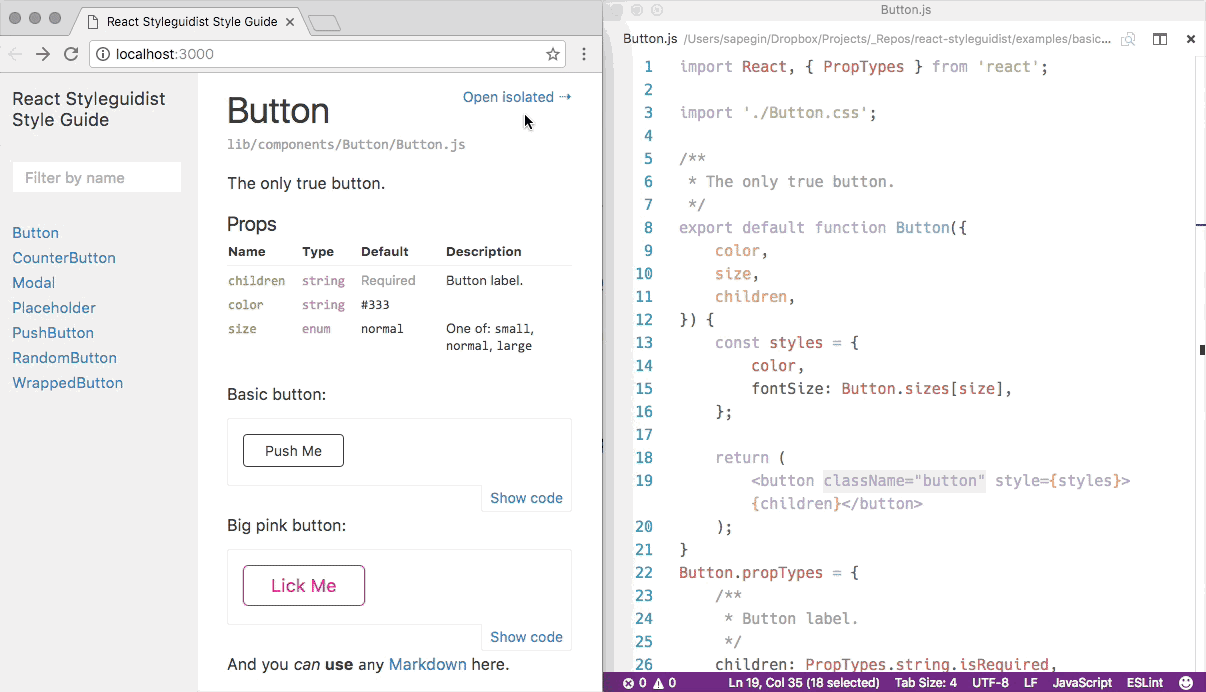
It supports ES6, Flow and TypeScript and works with Create React App out of the box. The auto-generated usage docs can help Styleguidist function as a documentation portal for your team』s different components.
4. React component playground
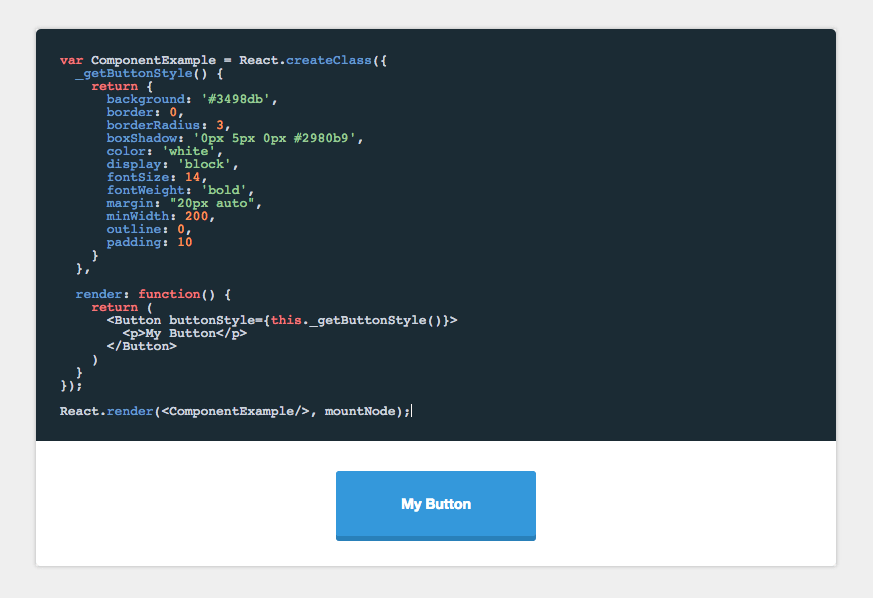
Built by Formidable labs, component-playground is a component for rendering React components with editable source and live preview.
It』s built for fast and easy setup and integration, with a babel-standalone build. It has a larger bundle size than react-live (see below), while using a more familiar editor setup.
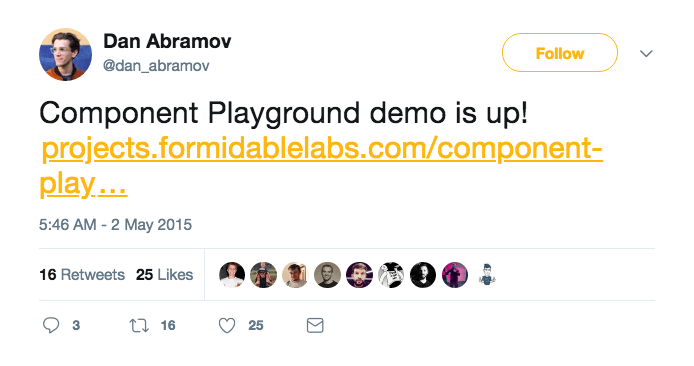
Note that unlike react-live, component-playground is not server-side renderable. However, it does support raw evaluation and pretty-printed output out-of-the-box. It』s a cool project, so feel free to take a look.
5. Stackblitz
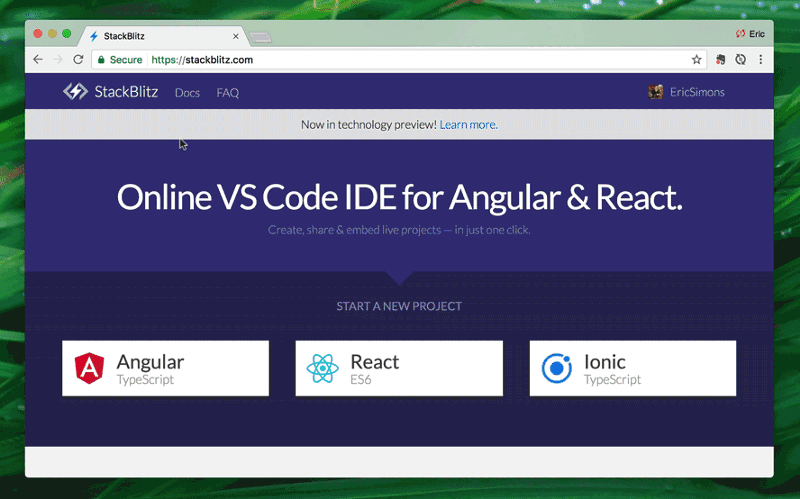
Stackblitz is an 「online IDE for web applications」 powered by Visual Studio Code. Much like Codesnadbox, StackBlitz is an online IDE where you can create Angular & React projects that are made shareable via a URL link.
It automatically takes care of installing dependencies, compiling, bundling, and hot reloading as you type. Intellisense smart completions (w/ type definitions from npm), Project Search (Cmd+P), Go to Definition, and other key VS Code features 「just work」 out of the box.
StackBlitz also utilizes Progressive Web App API』s to run a live dev server in-browser, so you can keep on coding offline. The editor』s core packages are hosted in this GitHub repo. Feel free to jump in and start playing.
6. React live
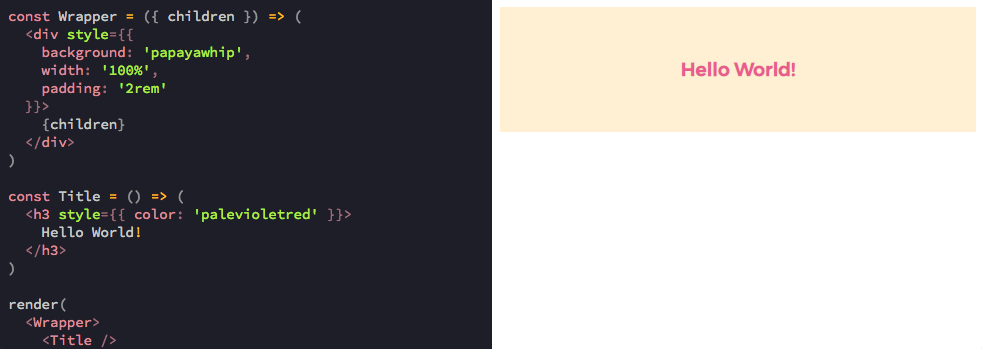
Like react-component-playground, this too is a React playground by Formidable labs. React Live emphasizes the ability to render React components and present the user with editable source code and live preview.
It supports server-side rendering and comes in a small bundle, transpiling your code through Bublé, while the code is displayed using Prism.js. The transpiled code is then rendered in the preview component, which does a fake mount, if the code is a component. react-live is more modular and customizable than component-playground, aiming to deliver a production-focused playground for live editing React code. Take a look.
7. JS Bin
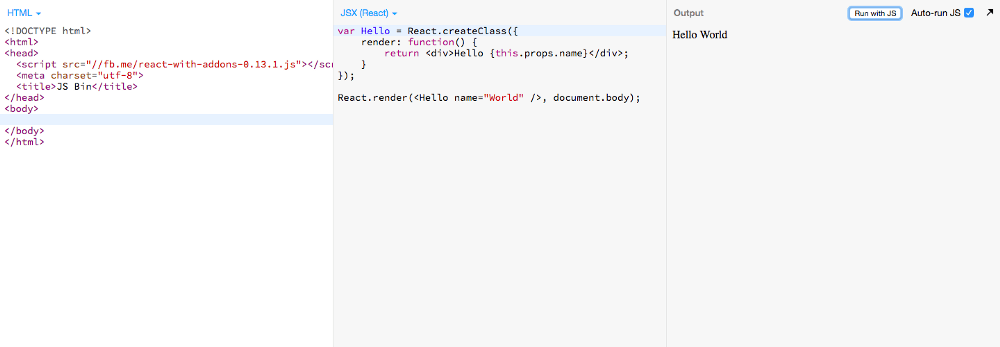
The well familiar and loved open source collaborative web development debugging tool by Remy Sharp is a pioneer in online code playgrounds.
JS Bin lets you write code and have it both save in real-time, and render a full preview in real-time. You can share and edit URLs to work together, while remote rendering lets view the output of your JS Bin on any device on any platform, updating in real-time.
JS Bin provides processors out of the box including coffee-script, LESS, Markdown and Jade. You can also debug remote Ajax calls. With CSS and JSX support, it becomes a useful tool for playing with React components online. Here』s a short guide to setting up common React ecosystem tools using JS Bin.
8. CodePen
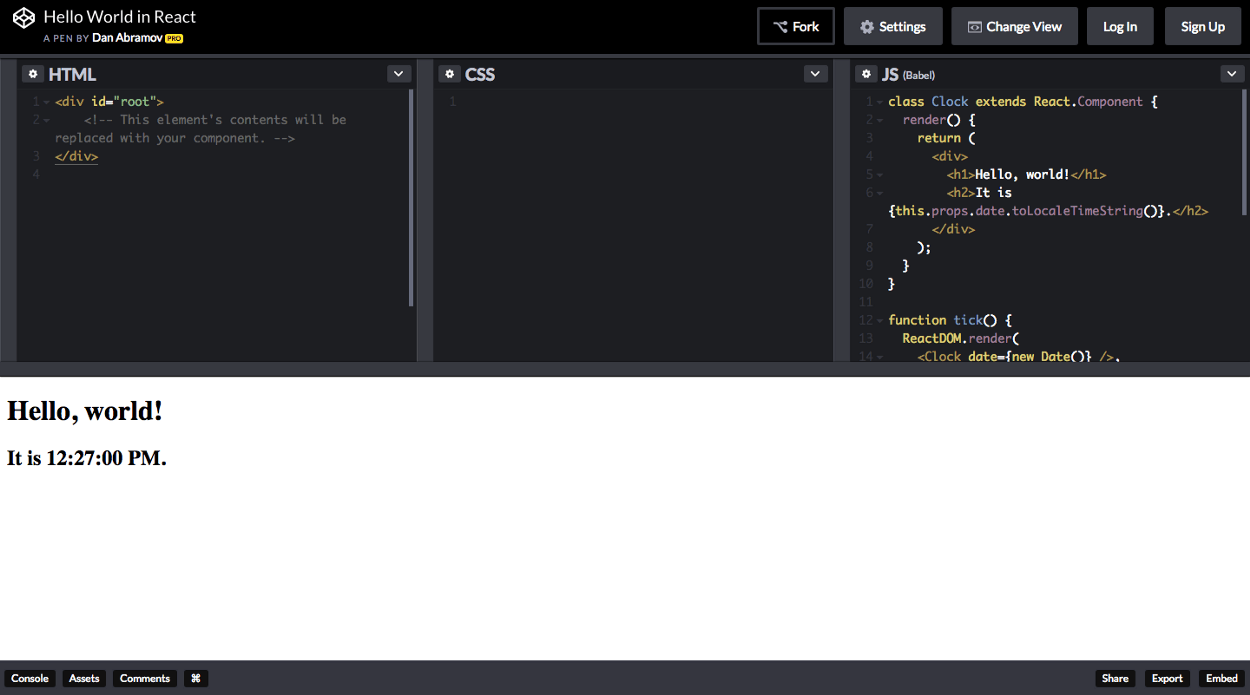
CodePen is a widely popular online development environment for FrontEnd developers to play and share snippets in a visual way. It functions as an online code editor and open-source learning environment, where developers can create code snippets, creatively named 「pens」, and test them.
You can write HTML, CSS, and JavaScript snippets and get a real-time preview, debug, share and get a feeling of the code hands-on. Preprocessor syntaxes include Sass, LESS, Stylus, PostCSS. Markdown, Haml, Slim, Pug & more, and CodePen even has a special 「presentation」 mode for showcases.
Here』s a useful Cheatsheet for setting up a React playground on CodePen.
9.JSFiddle

Created at 2009 JS by Oskar Krawczyk and Piotr Zalewa JSFiddle is a veteran and widley popular tool for playing with code online. It provides panels where you can enter code and see the result, including:
HTML — structure code, no need to add body doctype head, that's added automatically
CSS — styles. You can switch pre-pocessor to SCSS.
JavaScript — behavior. There are many frameworks and code pre-processors you can use.
You can save, run and even fork Fiddles to work and share with others, and even provides a GitHub integration so that you can skip the part of hosting code on JSFiddle and load it directly into the editor from a Github repository.
Here are two options (1+2) for setting up a React setup with JSFiddle.
10. PlayCode
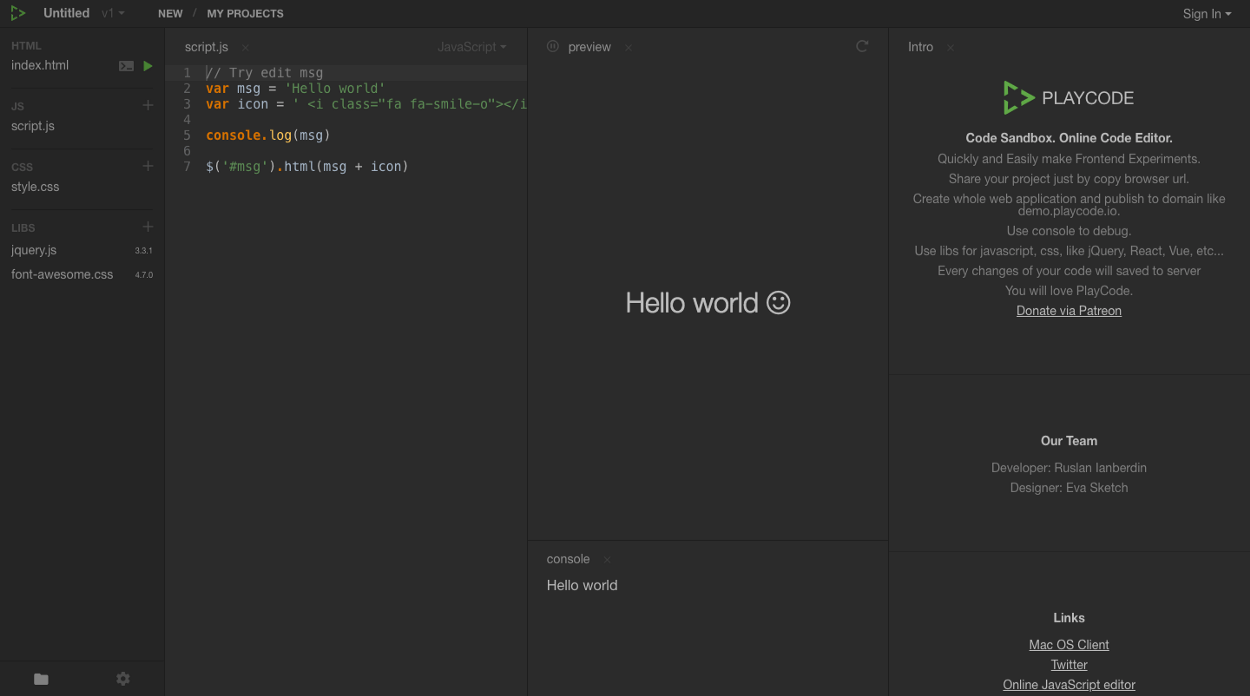
11. UiZoo
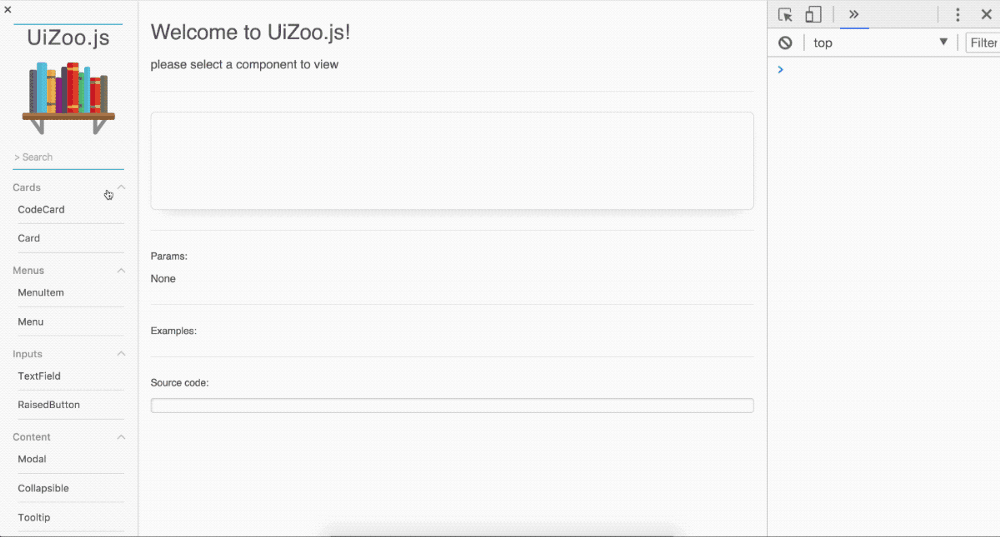
Created by Noam Elboim UiZoo.js is a rather new and useful dynamic React component library that showcases your components, letting you develop them in an isolated environment and browse what you already have.
You can provide the components and their docs to UiZoo.js, which creates a page for each component and a sidebar to search and filter components
Using JSDoc it parses component』s documentation to show visual information on your component』s page, including description, possible props and full JSX examples. Using its own version of Doctrine, the project supports a wide variety of JSDoc tags. Feel free to jump in and take a look on GitHub.
Learn more
每天推薦一個 GitHub 優質開源項目和一篇精選英文科技或編程文章原文,歡迎關注開源日報。交流QQ群:202790710;微博:https://weibo.com/openingsource;電報群 https://t.me/OpeningSourceOrg
